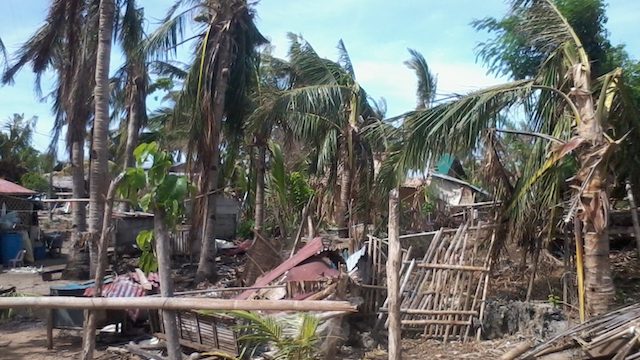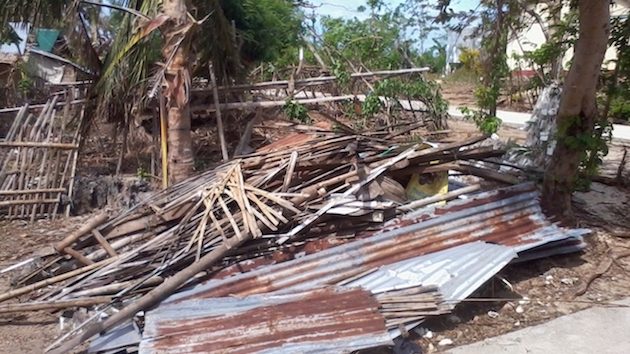SUMMARY
This is AI generated summarization, which may have errors. For context, always refer to the full article.

ANTIQUE, Philippines – Although the Philippines is endowed with thousands of small islands with less than 10,000 square kilometres of land, these islands have fragile ecosystems, limited natural resources, and are populated by communities heavily dependent on what nature has to give.
The country’s islands are also highly exposed to natural disasters and human-induced hazards.
What are small islands?
Small islands are areas less than 2,000 square kilometers where the width is not greater than 10 square kilometres. However, in the Pacific Ocean, and in studies of water resources, small islands have been measured at 5,000 square kilometers.
A United Nations Educational, Scientific and Cultural Organization (UNESCO) publication specifies that the upper limit for small islands should be within range of 5,000 to 10,000 square kilometres.
The UNESCO Man and Biosphere Programme considers small islands to be 10,000 square kilometers or less in surface and have 500,000 or fewer residents.
Small islands’ situation
Small islands in the Philippines are most exposed to extreme climate and weather events, geophysical hazards, and are also vulnerable to human-induced hazards due to irresponsible extraction and the unregulated use of its very limited natural resources.
Small islands are home to many of the poorest and most vulnerable households in the country with close to half of its population living below poverty line. In the Gigantes chain of islands, for example, 80% of its population live below the poverty line.
Many small islands in the Philippines have remained not only physically and geographically isolated over many years, but have been cast into isolation economically, politically, and socially by governments that have not given attention to their concerns. (READ: Island communities: Are they forgotten in disaster reduction efforts?)
With its natural resources, small islands have significantly contributed to the national economy yet their very source has been sacrificed.
Given their high level of exposure to extreme climate and weather, geophysical and man-made hazards, the vulnerability of its population, the limited capacities of the LGUs to address climate challenges, and other disaster-related threats, the survivability of small islands and its communities are threatened.

The very basic rights to life, property, development, environment of the women, men, children youth, elderly, and persons with disabilities living in the islands are now being put at risk because of inaction to the challenge of natural and human-induced hazards in the fast-changing climate. (READ: UN climate scientists see grim future if no action)
In October 2011, local government units (LGUs), civil society organizations (CSOs), and humanitarian institutions from Luzon, Visayas, and Mindanao called on the national government agencies (NGAs), donor institutions, CSOs, and private sector institutions to give immediate attention to the plight of small islands in the Philippines.
They signed the “Call for Action for Small Islands in the Philippines” during the National Conference on Disaster Risk Reduction and Climate Change Adaptation in Small Islands.
“We believe that it is the essential duty, the moral obligation of the state, the government and its people, to protect the rights of the small island communities and to ensure their survival amidst the hazards they face,” the document said.
Exposed and vulnerable
Since small islands are considered Geographically Isolated and Disadvantaged Areas (GIDA) they are more unprotected when faced with different climate-related, geophysical or human-induced threats.
Although some bigger islands have warning systems, these are not applicable to small islands. For example, a tropical depression or monsoon wind for big islands is equal to life-threatening storms and waves to small island-communities.
Natural hazards severely affect the livelihood of small island communities. Typhoons, storm surges, and powerful winds mean no fishing for small island fishermen.
Small islands still do not have inter- and intra-island public transport facilities, road networks, food management systems, communication systems, and health facilities that are vital lifelines in small islands during typhoons and other natural disasters.
The level of resource extraction and destruction in small islands threatens their limited resource base. Dependency on marine resources, heavy importation of food needs from other islands, and freshwater limitations threaten small islands’ capacities to survive during natural calamities and disasters.
The ecosystems of small islands are also sensitive to external influences. Programs applied to big island ecosystems may not be applicable to small islands and may even threaten their natural resources.
LGUs in small islands are not yet prepared to face current and future climate-related and other disaster hazards, address their constituencies’ vulnerability or increase their capacities to the hazards.
Storms and devastation
The third-class municipality of Culasi in the Province of Antique has three island barangays: Malalison, Batbatan, and Maniguin.
In Maniguin, around 50 hectares of floating seaweed farms surrounding the island were washed out when Super Typhoon Yolanda (Haiyan) devastated Northern Antique in November 2013.
The seaweeds or tambalang are the primary source of income for the 828 residents of this island-barangay. They sell the commodity to buyers within and outside the province. It is also an alternative source of food for the people of Maniguin when the fishermen’s catch is not enough.
Torres, a resident of the island, recalled that as early as November 6, 2013, Mayor Joel Lomugdang of Culasi and the Coast Guard based in the port of Lipata issued a warning regarding the super typhoon.
Torres herself ordered the evacuation of the barangay on November 7. More than 800 residents gathered in the 5 rooms of the school and in the one-room health center and spent the night there.
Yolanda displaced many residents, with 95 houses totally damaged and 78 partially damaged – only six houses remained intact.
Recommendations
In order to protect these small islands, there is a rising need to enable the residents to understand the risks and hazards that they face and respond to them appropriately.
Here are some recommendations:
- Make risk or hazard maps available to small islands.
- Prioritize small islands in the installation of automatic weather stations and establish an alternative warning system that takes into account the realities in the small islands.
- Reduce the isolation of small islands by installing inter and intra-island communication systems to ensure fast dissemination of impending disaster information.
- Allocate resources to make local government lifelines like food, water and power supplies more resilient especially in times of powerful hazards.
Lastly, the capacities of small islands for disaster risk reduction and climate change adaptation must be enhanced and prioritized. – Rappler.com
Anthony Mondragon holds a degree in Journalism from West Visayas State University and is taking up a Masters’ Degree in Mass Communication from the same university. He currently works as the Knowledge Management Coordinator for the Antique Federation of Non-Government Organizations (AFON), Inc.
Add a comment
How does this make you feel?
There are no comments yet. Add your comment to start the conversation.